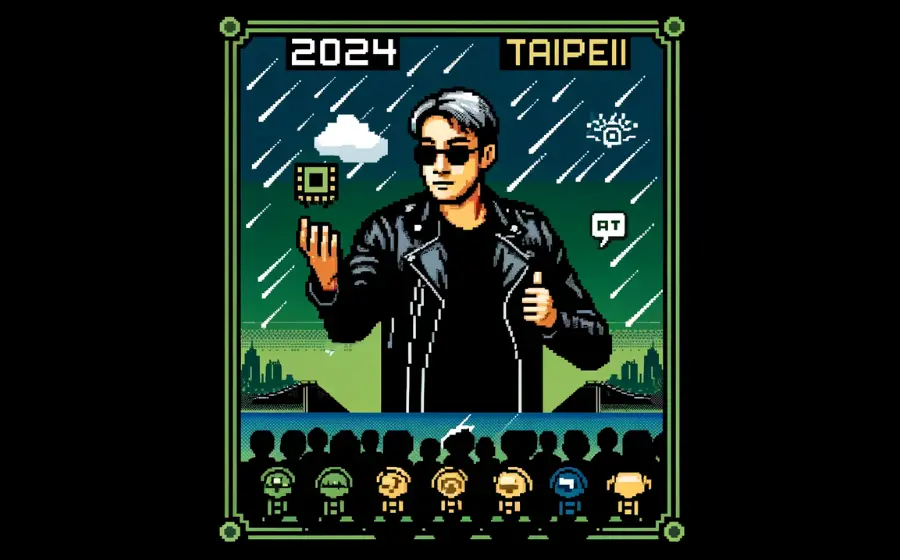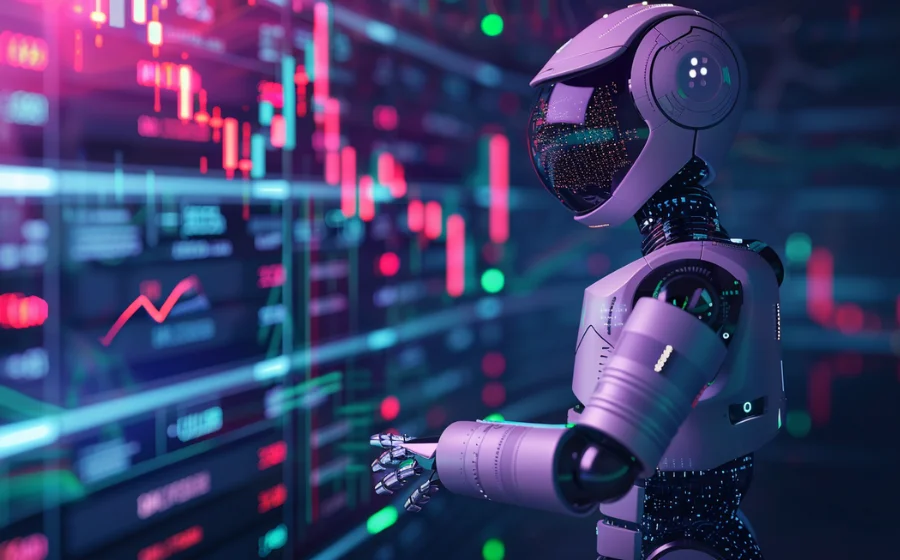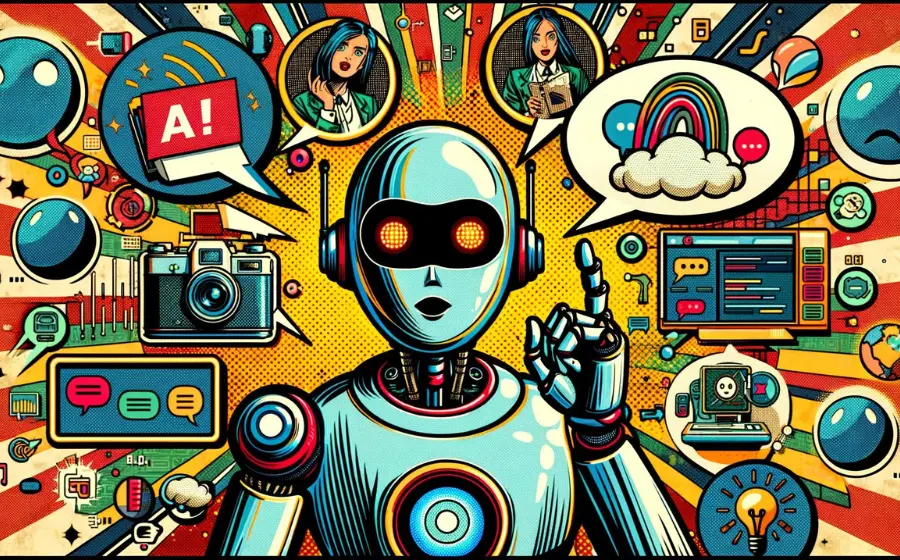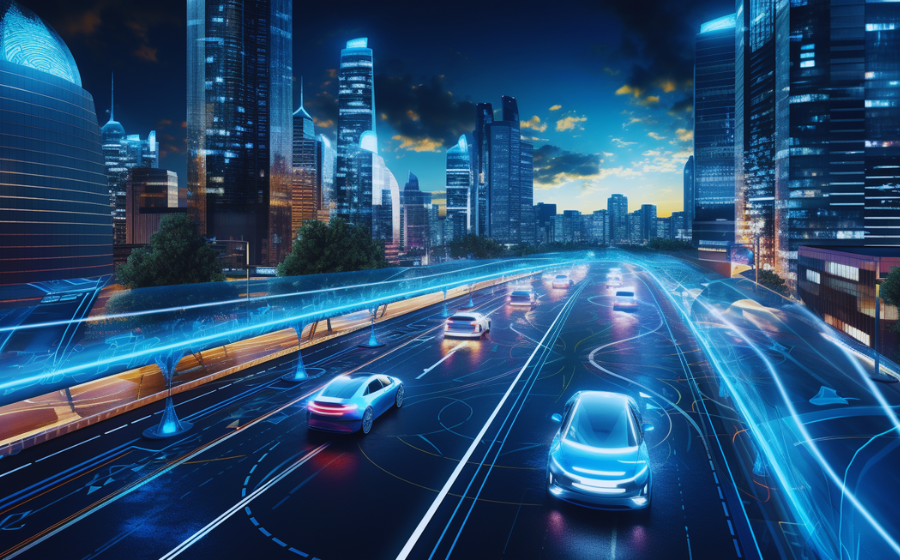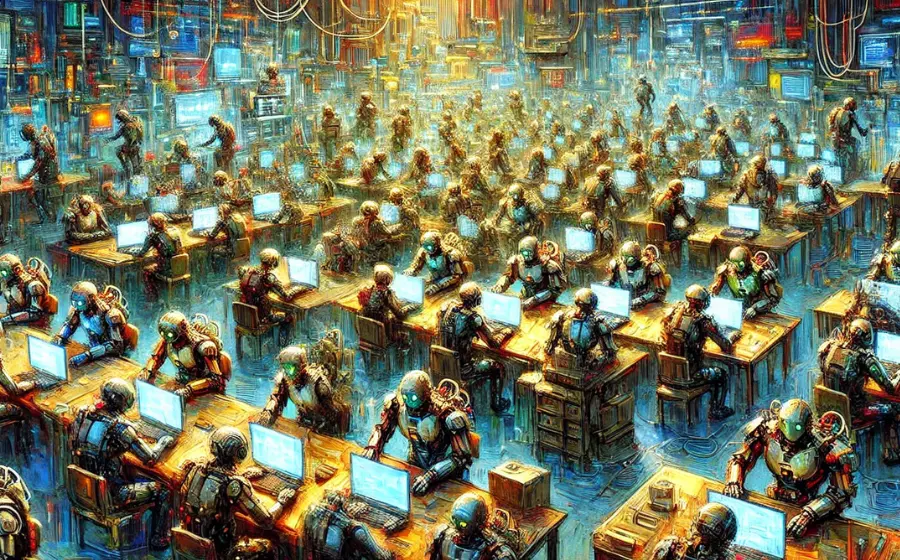
KEYTAKEAWAYS
-
The smart cities market is experiencing significant growth, with developing countries actively investing in smart city development.
-
Smart cities rely on IoT devices, data analysis, and AI to improve urban living, security, and healthcare.
-
Artificial intelligence plays a crucial role in optimizing smart city operations, and industry players must focus on strategies like webinars, professional social media, team education, dedicated support, and technical integration to drive customer adoption.

- KEY TAKEAWAYS
- CURRENT STATUS AND CASES OF SMART CITY DEVELOPMENT
- Current Development of Smart Cities
- Case Study: Smart City Development in Singapore
- Significant Impact of Artificial Intelligence on Smart Cities
- Entry Strategies of Artificial Intelligence Industry Players in Smart Cities
- DISCLAIMER
- WRITER’S INTRO
CONTENT
CURRENT STATUS AND CASES OF SMART CITY DEVELOPMENT
Data Bridge Market Research analysis shows that the smart cities market was valued at USD 390.13 billion in 2021 and is projected to reach USD 187.43 billion by 2029, growing at a CAGR of 21.68% from 2022 to 2029. Some developing countries are leading the way in smart city investment, with governments investing billions of dollars in smart city design as everything will connect together in these smart cities. Utilizing smart cities for waste collection will benefit certain areas, and lowering the cost of Internet of Things (IoT) sensors is an essential factor in driving the growth of the smart city consortium. As for the significant players, Essar, Siemens, Cisco, BSNL, Honeywell, GE, Reliance infra, Wipro, ABB, HP, Orange, Tech Mahindra, IBM, NEC Corporation, and Huawei are the major solution providers worldwide.
Current Development of Smart Cities
With the increasing number of large-scale cities, governments are actively promoting smart cities to solve the problems caused by urbanization. As the world’s population gradually concentrates on large cities, governments are actively applying innovative ICT to build smart cities to solve the healthcare and transportation problems behind urbanization, and smart cities are composed of various Internet of Things (IoT) devices., The Digital Industry Council (DIC) is actively promoting the APP and IoT security certification to protect the security of smart cities. As the world’s population gradually concentrates in large cities, governments are actively applying innovative ICT to build smart cities to solve the healthcare and transportation problems behind urbanization. smart
If we analyze a smart city from a technical point of view, it consists of a cloud layer, network layer, device layer, and other Internet of Things devices. Bob Hung, President of Taiwan Cyber Security Application Services Alliances, suggested that in terms of security management mechanism, it should cover regular vulnerability testing, setting information security requirements, ensuring continuous security updates of software, life cycle planning, encryption and authentication of connection pipeline, manual stopping mechanism, fault-tolerant system design, ensuring service continuity, and considering data privacy handling. The system design of fault-tolerant processing, ensuring service continuity, and considering the handling of data privacy. It is recommended that public and private departments responsible for smart cities set up a security incident response organization to deal with the issues mentioned above so that they can react in the first instance to minimize the damage caused by an information security incident. Smart cities usually have three main characteristics:
- Utilizing Data to Make Intelligent Decisions
Under the smart city framework, “data-centricity” is the principle of effective city operation. By analyzing and integrating information with the vast amount of data provided by the Internet of Things(IoT), and sharing and connecting it through information and communication networks, the vision of a smart city can be realized step by step. In an era where everything is connected, the development of smart cities is influenced by how well local governments can utilize a considerable amount of data and make critical decisions to promote citizens’ quality of life and urban development. The program should explore new values from existing resources and actively establish cross-city cooperation opportunities. Without data to analyze, even the most potent AI technology is useless, so local governments can hand over the massive amount of data generated by IoT to AI to explore,, combine local citizens’ feedback and experts’ interpretations, and turn the data into strategies, then share the resources with other cities to create a more excellent value.
- Building Smart Applications with Technology
Based on the vast amount of data, city administrators can further implement AI solutions with high analytical capabilities and combine them with IoT to form “AIoT” and then make good use of the soon-to-be popularized 5G to accelerate the development of smart cities. Before using the technology, it is necessary to take stock of the city’s Internet of Things architecture, cutting-edge AI technology, hardware and software construction, and network coverage to confirm whether it is fully prepared for the development of a smart city and at the same time, find out the characteristics of the city’s intelligent construction and find a suitable entry point. The advent of the 5G communication era will accelerate the development of smart cities. In addition to its unprecedented ultra-high-speed transmission, 5G’s low-latency and massive connectivity will lead to the full-speed development of smart city applications and interconnectivity, and a smart city with 5G technology will be able to bring unimaginable benefits that were unimaginable just a few years ago. The combination of 5G technology and smart cities will bring fantastic community living experiences that were unthinkable a few years ago, strengthening people’s sense of community and creating a new mode of interaction through faster and simpler digital connectivity.
- Information Security Becomes the Focus
Information security is critical when innovating smart applications for cities and constructing smart spaces. When governments and industries compete to develop smart cities, the use of information may carry risks in different dimensions. Hence, enterprises should be reminded that information security and privacy protection principles should be embedded in every stage of innovating smart applications. The government should incorporate information security principles into every step of the development process of a smart city, from strategic planning and design to implementation. When the city’s various infrastructure is geared towards intelligent upgrading to develop multiple applications, data exchange and integration will play a vital role, making it necessary to open the front and back doors, allowing hackers to take advantage of the opportunity.
Case Study: Smart City Development in Singapore
Singapore is an excellent example of a smart city. Due to its unique situation and history, this country, often criticized as “boring,” has made the neighboring Asian countries actively learn from it regarding municipal and industrial planning. In recent years, in addition to building a green environment for Singapore 2030 (Singapore 2030 is a whole-of-nation movement to advance Singapore’s national agenda on sustainable development.), the launch of Smart Nation in 2014 has led to a significant increase in digital transformation in each city. Now, nine years later, with an eye on the Metaverse as an upgrade to the original Smart City, the Infocomm Media Development Authority(IMDA), a subsidiary of the Singaporean government, has begun to think about how to build the Virtual Nation. Other than holographic projection and digital identity simulation, there may be another ways: to establish the AR/VR technology innovation, and this heavy responsibility falls on IMDA’s Pixel Innovation Hub.
In 2019, a startup called Augmenteed was founded. The company’s value proposition of “helping companies digitize their manufacturing processes” may not seem extraordinary. Still, its primary approach is to facilitate business transformation through a no-code/low-code platform rapidly and, at the same time, allow technologists to remotely mentor on-site employees through the use of AR so that new employees can get up to speed quickly, enabling more people from non-informatics backgrounds to get involved and become a “citizen developer.” Pixel Innovation Hub’s primary function is to help select suitable startups. There are so many manufacturing industries that need to transform, so Pixel Innovation Hub’s job is to help find critical customers and recommend them to large enterprise partners, such as JTC LaunchPad TechFiesta. On one hand, Pixel Innovation Hub allows startups to grow, on the other hand, it accelerates the adoption of AR/VR equipment by Singaporean companies, paired with technologies such as AI, IoT, and 5G, to a virtualized and integrated economy. Other startups include spatial technology company Virspatial, whose main product is its digital doppelgänger, which allows users to create virtual doppelgängers of factories, buildings, and even cities.
Singapore sees its workplace changing from a static professional environment to a more immersive one in the next three years, and the increased demand for virtual spaces is good news for small and densely populated Singapore. Meanwhile, Singaporean virtualization company Affyn has announced that Singapore has become the first virtual state to have 2,000 freehold NFT plots in a virtual environment, with more cities to follow in the coming months. All 2,000 of Affyn’s NEXUS World’s Land NFTs are aligned to specific locations in Singapore. Thanks to mobile geolocation technology benchmarked against meta-universe cities directly connected to the real world. It is easy to see how Singapore builds a living economy that integrates the real and the virtual, from industry to everyday life.
Significant Impact of Artificial Intelligence on Smart Cities
Innovative city solutions powered by AI have the potential to learn from citizen-community interactions. With the predictable change in the quality of AI algorithms, AI has the potential to analyze the habits of city dwellers to improve city planning and management, enabling municipalities to anticipate the needs of citizens better and meet them in advance. Large amounts of data are generated in cities due to the prevalence of public transportation, municipal taxes, police records, traffic sensors, and weather stations. This data must be collected and evaluated to provide results that can be used to improve cities.
Artificial intelligence can process large amounts of data from various sources to discover insights that can be used to improve the effectiveness and efficiency of municipal operations while reducing associated costs. Due to the lack of real-time information, a large portion of a city’s public infrastructure needs to be more utilized at any given time to prevent traffic accidents . Artificial intelligence-driven smart city systems can collect and analyze data from various municipal services. Problems ranging from traffic to crime can be solved in “smart cities” as artificial intelligence is combined with analysis based on data collected by sensors throughout the urban environment.
Table: Application of Artificial Intelligence in Smart Cities
| Application | Description |
| Environmental Protection | Smart cities can use artificial Intelligence to understand their impact on the local environment, global warming, and pollution levels. Using artificial Intelligence and machine learning in pollution control and energy consumption enables authorities and cities to make informed decisions that are best for the environment. Smart cities also use AI to detect carbon dioxide to make transportation decisions. |
| Energy Usage | Artificial intelligence can analyze and track the energy usage of businesses and citizens, which can then determine where renewable energy is being used. This application can also show cities where energy is wasted and how it can be saved. |
| Traffic Management | Artificial Intelligence technologies are being implemented within the transportation industry to reduce traffic pollution and accidents. For example, deep learning algorithms are used to predict and reduce the flow of traffic, thus reducing pollution caused by traffic; AI can also be used throughout traffic camera systems to detect road crimes in real time, making criminal behavior more manageable to track. |
| Waste Management | Smart cities are beginning to use artificial intelligence in waste management. This technology allows cities to track recycling and identify items that can be recycled in the area. Smart cities can use artificial intelligence-powered robots to sort garbage, as well as clean areas such as lakes and rivers. |
| Parking System | Using license plate recognition technology helps detect cars parked over time, which can also issue tickets and manage the payment process. When integrated throughout the parking lot, artificial intelligence systems can show waiting users the available space, and some more advanced technologies can recommend areas based on cars. |
| Maintenance |
Startup RoadBotics has developed a technology using artificial intelligence that analyzes road images, then assesses the problem and creates a cost-effective solution. This function allows cities to know when and where repairs are needed and to address them while controlling the budget. It also improves safety within the town because problems are noticed.
|
| Security | Security camera footage is usually reviewed when a crime is reported, but this does not prevent or stop the crime. Security cameras using artificial intelligence can analyze footage and detect criminal behavior in real time, then register and process it immediately. These cameras can also see people by their clothing, thus enabling the technology to find suspects faster than ever before. |
Entry Strategies of Artificial Intelligence Industry Players in Smart Cities
1.Creating a dedicated webinar program
Artificial intelligence software players say hosting their webinars is the tool that works best for their companies. According to market researchers, over 60% of B2B businesses included webinars in their marketing strategies. Webinars provide an excellent opportunity for a company’s technical experts to present product information and answer technical questions, making the webinars engaging and interactive. By managing their webinars, companies can provide the scripts and formatting, giving them the time to deliver a presentation or thorough Q&A. Additionally, a company can create a portfolio of recorded webinars for customers to view later.
2. Raise The Profile of Professional Social Media
At the same time, managing one’s social media content for professionals (e.g., LinkedIn) can be effective in terms of ROI, even more so if vendors pair this channel with other marketing tools (e.g., marketing one’s webinars on LinkedIn). Managing professionally oriented social media content can be as simple as getting a company’s master account to discuss new technologies and software. Still, some technology vendors have found higher levels of user engagement by leveraging employee-user interactions in the community, especially when using third-party social platforms. Employee outreach is a cost-effective way to build trust and credibility, as people in the employee network are more likely to believe what their employee connections say and help extend reach and awareness.
3. Educate Your Team and Sales Force
AI operators’ most critical success factor in driving customer adoption is when companies educate their teams (not their customers) about their products, especially their sales force. This approach allows for customization of training sessions based on each team’s involvement and needs. For example, sales teams need training on how new software works and how to engage customers, with the following three standard practices: (i) Access to resources: Ensure that their teams have access to resources such as eBooks, white papers, toolkits, and in-house experts to help them on their learning journey. (ii) Cross-functional hands-on workshops: Organize interactive sessions that provide practical learning and real-life scenarios for new IoT software. (iii) Successful examples of commercialization of AI industry software: Product managers from AI industry software vendors noted the importance of communication and education between their sales and product management teams, including their leadership.
4. Providing Excellent, Dedicated Support
Software executives in the artificial intelligence industry cited dedicated support as the second most crucial factor in customer adoption. Interestingly, while North American and European IoT software executives aligned on the customer adoption factors(e.g. investing in tech), Asia-Pacific executives aligned only on providing dedicated support, marking it as the most critical adoption factor. As B2B customers adopt and implement IoT solutions, having direct access to excellent, knowledgeable, and specialized support becomes essential. Dedicated customer support ensures that customers receive technical support tailored to their needs, especially if the support team is well-trained and educated on the product. Additionally, as customers are likely to invest heavily in their IoT solutions, making the supplier-customer relationship more of a partnership helps to improve overall customer satisfaction.
There are five key elements that industry players need to pay attention to: (i) Customer Window: A proprietary, fixed online window that provides access to product documentation and knowledge base articles. (ii) Technical Account Manager: A service for customers who require a more customized level of support, providing a dedicated technical advisor who understands the customer’s unique environment and needs. (iii) Support Policies: Policies detailing lifecycle and support levels so customers know how long products will be updated and supported. (iv) Global Locations: For example, Red Hat has established global locations to provide timely support to customers wherever they are. (v) Certification Ecosystem: Red Hat works with a large ecosystem of certification partners to ensure that third-party applications and hardware work seamlessly with Red Hat products and that if a problem arises, Red Hat can often collaborate with these partners to find a solution.
5. Provide Technical Integration Support for Clients
Artificial intelligence vendor Software AG believes that the most significant obstacle to customer adoption is the “complexity of technology integration,” how to assist customers in navigating this hurdle is an issue that the industry needs to address head-on. Software AG, a German IoT platform provider, offers several IoT professional services, along with the introduction to AI users, to help organizations adopt, learn, and manage their digital transformation solutions, as well as a readiness guide that explains the typical digital transformation journey, pain points, and other considerations. Operators can reduce the learning curve for their customers by doing the following.
-
Provide comprehensive documentation and support: Besides excellent, dedicated customer support, a detailed user manual helps customers through the integration process. In addition, a community forum allows customers to gain insight from others who have faced and overcome similar challenges.
-
Provide specialized training and education: On-site training and online courses specifically address integration with standard tools and frameworks.
-
Create integration-specific customer feedback loops: Customer support teams can create feedback loops with customers to understand their integration challenges and work with development teams to improve integration capabilities based on that feedback.
-
Provide IoT integration services: Build in-house teams or work with reliable system integrators to provide customers with various “integration” services.
6. Help Customers Overcome Internal Resistance to Change
AI vendors should label “resistance to change” as the second most crucial barrier to customer adoption—a central theme in the survey responses centered around familiarity with old and new software. The management team at a UK company noted that “people tend to be reluctant to adopt new solutions, especially more senior employees.” The IT manager of a software vendor in the Philippines shared the following success strategy: “Often, it’s familiarity that matters to customers. Customers are so used to the old paradigm that they feel overwhelmed when we introduce new software. This challenge is mitigated by well-trained people, which can be traced back to the emphasis the vendor puts on training and educating its teams and accumulating knowledge about other software and how it compares so that customers understand the software better and how it works. Here are five things IoT software vendors can do to help their customers reduce internal resistance to change.
-
Provide data to support value propositions: Provide data-driven evidence of how the software will increase efficiency, save time, reduce costs, or provide tangible benefits.
-
Engage critical stakeholders early: Identify and engage decision-makers and influencers within the customer’s organization. If they see the value of the software, they can become advocates for adoption.
-
Offer a Pilot: Allow customers to run a pilot program. This approach allows them to test the software in a limited capacity, reduces risk, and lets them experience the potential benefits.
-
Share case studies: Share success stories from other similar businesses. Prospects may be more inclined to adopt when they see their peers benefiting.
-
Provide communication templates: Provide organizations with templates or tools to communicate the software’s importance and benefits to their teams.
7. Consider Regional Adoption Rates and Strategic Deployment
Regions with faster software adoption rates for AI operators typically have higher demand for software and are willing to invest in IoT solutions. Focusing on these more rapid adoption regions can help vendors realize a faster return on investment. However, other regions should be addressed as well. While the above seven models are provided as a reference for industry players, there are ten questions that industry players are advised to ask their own companies before proceeding with a full business rollout and strategy development:
-
How do we expand our portfolio of IoT webinars and ensure they more effectively meet the specific needs and interests of potential and existing customers?
-
Are we utilizing the potential of our employees to increase our impact on professional social media platforms such as LinkedIn?
-
How can we improve our team education strategy to ensure each member is informed and adept at communicating our products’ unique selling points?
-
Is our support team adequately resourced and trained to provide excellent, dedicated customer support?
-
How are we innovating integration tools to reduce complexity and facilitate a smoother transition for customers moving from legacy systems?
-
What strategies are we implementing to minimize customer resistance to change (e.g., helping customers engage key stakeholders)?
-
Are we taking regional adoption rates into account when developing our marketing strategy?
-
How do we build a community where customers can share their experiences and learn from each other to reduce resistance to change?
-
How effective are the mechanisms we have implemented to collect ongoing customer feedback to ensure that our products continue to evolve to address their pain points (e.g., technology integration)?
-
How can we leverage customer success stories more effectively to build trust and accelerate adoption (e.g., in regions with slow adoption rates)?
Looking for the latest scoop and cool insights from CoinRank? Hit up our Twitter and stay in the loop with all our fresh stories!
